Scottish tribute to soldiers who foiled Nazis' A-bomb
- Published
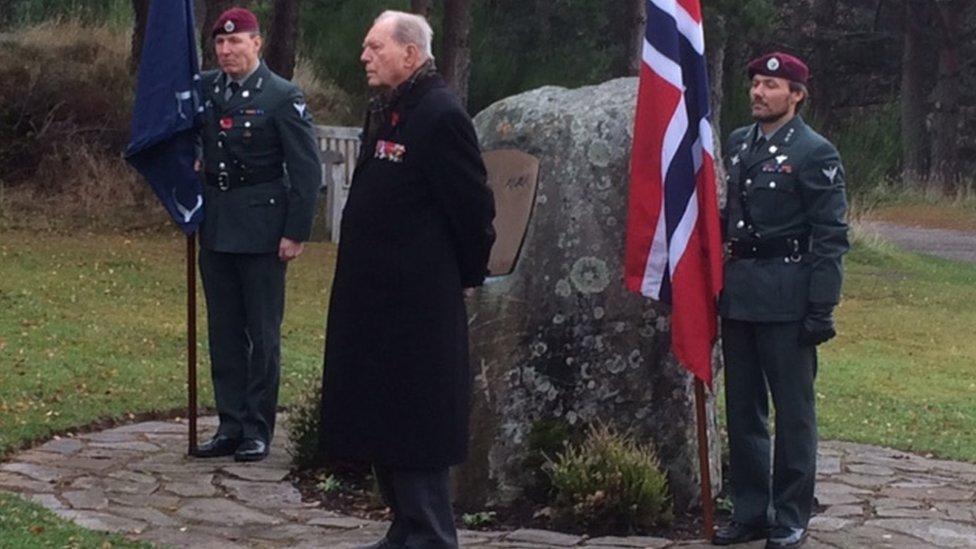
Norwegian veteran Erling Lorentzen and serving soldiers at Glenmore
The actions of Norwegian commandos to disrupt Nazi Germany's efforts to build an atomic bomb have been recalled at the Scottish site where they trained.
The members of the unit, Kompani Linge, honed their skills in fighting and sabotage at Glenmore, near Aviemore, before a clandestine mission in 1943.
The commandos attacked a heavy water plant at Rjukan in Telemark, in southern Norway.
Germany was using heavy water to control nuclear fission.
Erling Lorentzen, one of the last survivors of Kompani Linge, was among a Norwegian delegation that visited Glenmore Visitor Centre on Friday, Armistice Day.
There is a memorial to the Norwegian unit at the centre.
'Finish the war'
Mr Lorentzen, 93, who fought with the Norwegian resistance before later having to flee to Scotland, was making his first visit to Glenmore since 1944.
He told BBC Scotland: "I came here to continue the fighting with good training.
"I went through 11 months of hard training and making good friendships and good connections with the Scottish people. We were all wanting to finish the war."
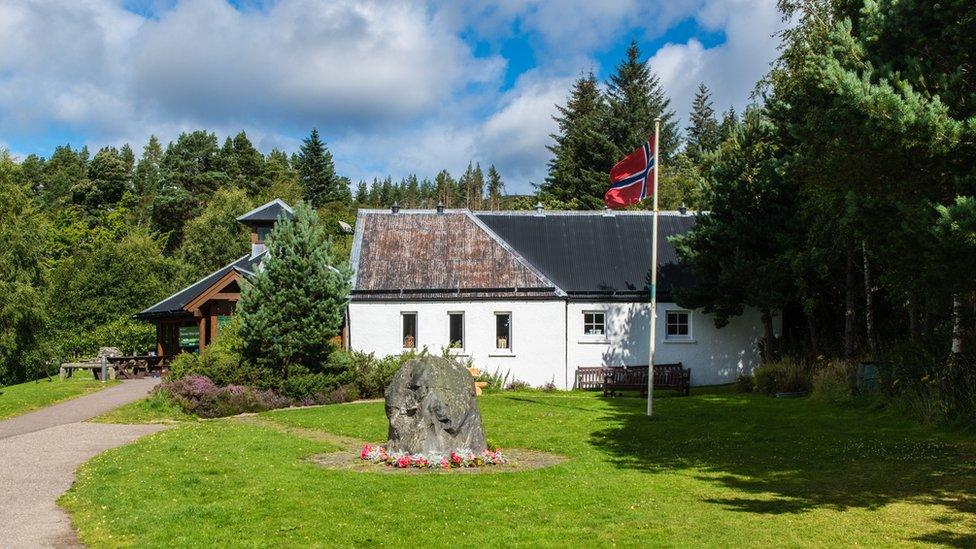
The Norwegian flag and the memorial to Kompani Linge at Glenmore Visitor Centre near Aviemore
An event marking the 70th anniversary of the attack at Rjukan was held at the Glenmore monument in 2013.
Brian Duff, of Forest Enterprise Scotland, which manages the Glenmore forest estate, said the latest remembrance event had added poignancy.
He said: "As the years go by there are fewer of these men left to mark the exceptional acts that were carried out by the Norwegian commandoes.
"There were many missions behind enemy lines but none more important than that which prevented the Nazi completion of the atomic bomb.
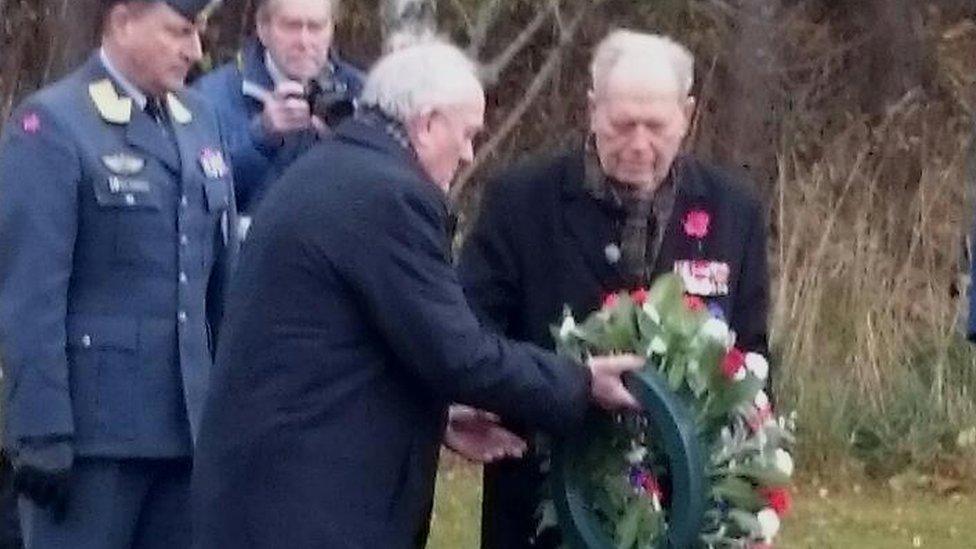
A delegation from Norway travelled to Glenmore to remember events of WW2
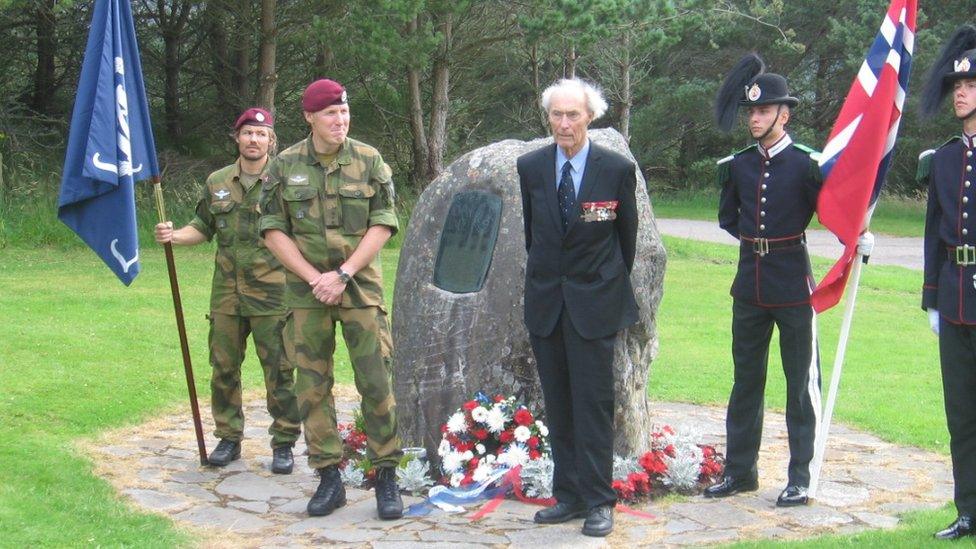
The 70th anniversary of the attack on the heavy water plant was marked at Glenmore in 2013
"We have had the honour of welcoming veterans here before but this year we are very privileged to join Mr Lorentzen for a very poignant Armistice Day commemoration at Glenmore."
Others in the Norwegian delegation were special forces soldiers, Norwegian Consulate General, Mona Røhne, Deputy Chief of Norwegian Special Operations Executive Command Eirik Kistoffersen and retired major general Johan Brun.
The delegation is to later travel to London for a commemorative event at the Special Forces Monument near Lambeth Palace.

The heavy water plant in Telemark pictured after World War Two
In WW2, along with other places in Scotland including Dumfries in the south of Scotland, Glenmore provided a base for Norwegian servicemen and women, who had escaped from occupied Norway.
A lodge at Glenmore in the Cairngorms was run by Britain's Special Operations Executive and known as Special Training School SPS26.
The Norwegian commandos stationed there trained for one of the most daring missions of WW2.
The heavy water war
Before the war, heavy water formed as a by-product in production of nitrogen fertiliser. But its properties fascinated scientists.
The heavy water plant at Rjukan was the only site in Europe producing large volumes of heavy water.
It fell under German control in the the occupation of Norway.
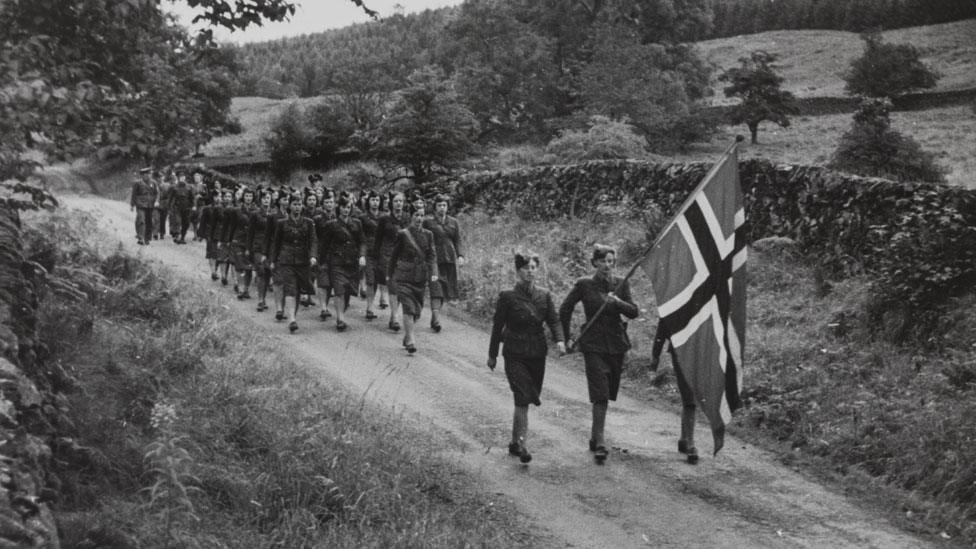
Scotland offered sanctuary to Norwegian servicemen and women fleeing their occupied country in World War Two
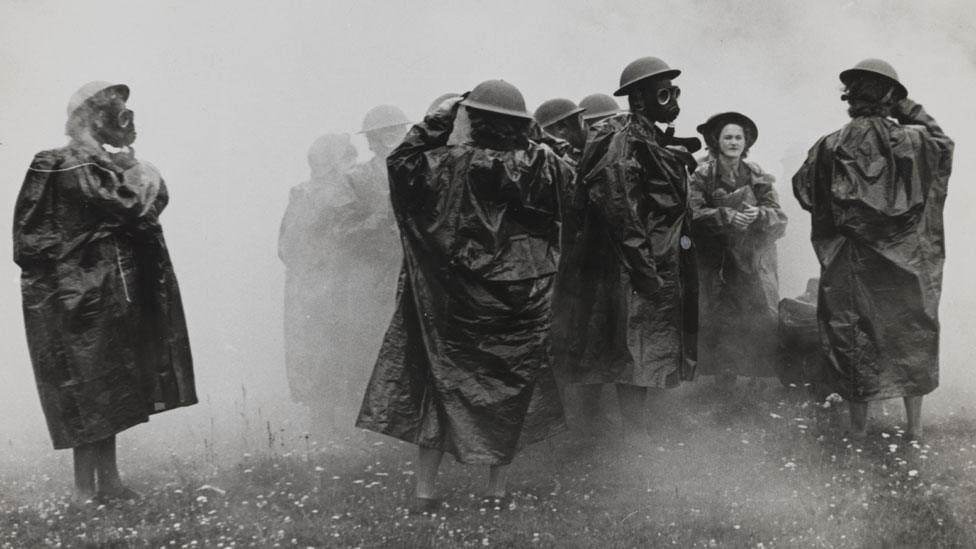
In Scotland, the Norwegains trained in preparation for a return to their homeland
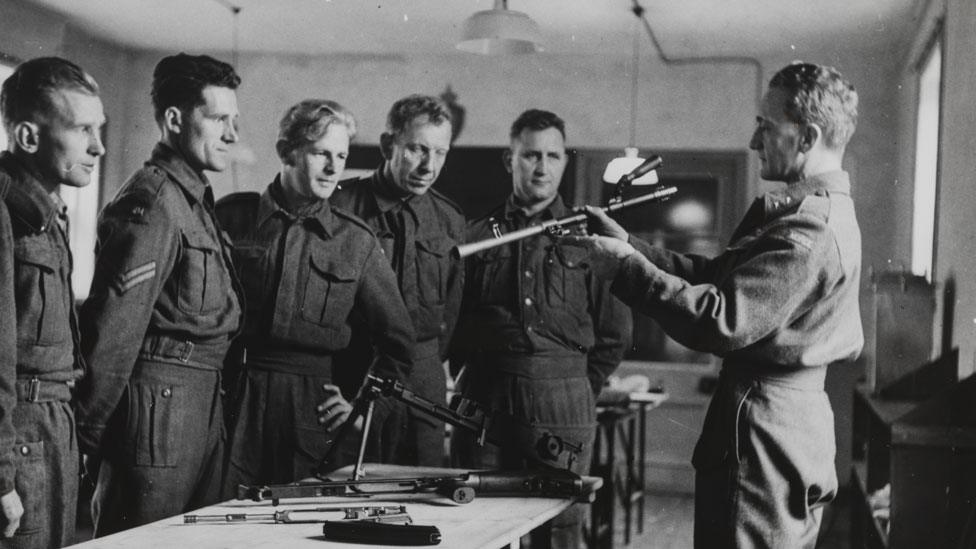
Norwegian soldiers receiving weapons training
After training at Glenmore, the men of Kompani Linge parachuted into Norway and then endured hard winter conditions while hiding on a high winter plateau before mounting their assault on the plant at Rjukan.
The commandos used explosives to damage the facility and destroy batches of heavy water.
The plant was rebuilt before being completely devastated by US bombers later in the war.
Members of the Kompani Linge also destroyed surviving barrels of heavy water loaded on to a ferry, which they sank.
The commandos' Rjukan attack inspired the 1965 film The Heroes of Telemark starring Kirk Douglas, Richard Harris and Ulla Jacobsson.
It was also recalled in the 2015 television mini series, The Saboteurs, also known as The Heavy Water War, external, which was broadcast in Norway by the Norwegian Broadcasting Corporation and, in UK, by Channel 4.
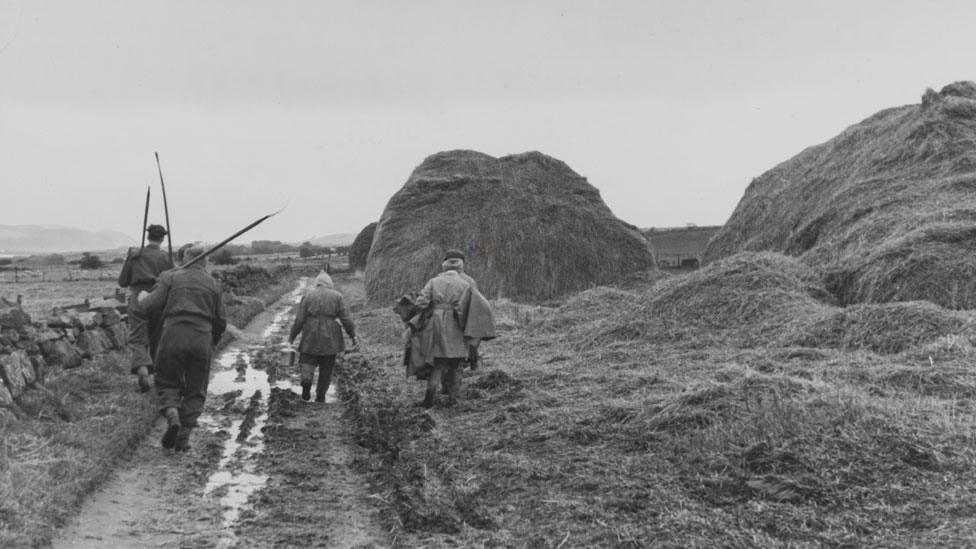
Norwegian soldiers helping Scottish farmers during breaks in their training
Other parts of Scotland also have close ties to Norway due to WW2.
Stately home Carbisdale Castle, in Sutherland north of Glenmore, was used as a refuge for the Norwegian royal family, while the Shetland Bus was the name given to boats that ferried resistance fighters and refugees between Norway and the Northern Isles.
Barracks building
Each year, Dumfries marks its war-time relationship with Norway.
The town and the surrounding area provided sanctuary for Norwegian armed forces personnel.
About 300 Norwegians arrived in Scotland in June 1940, landing in Hamilton before they were subsequently directed to Dumfries.
They received military training in the town and the Norwegian army command later moved there.
By 1941, their numbers had reached 1,000 and work got under way building a barracks at Carronbridge, north of Dumfries.
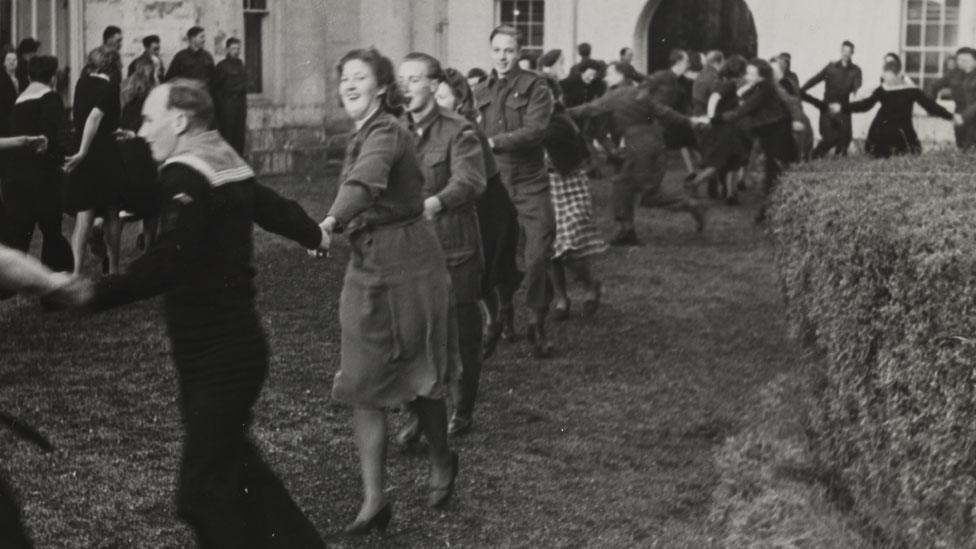
Scotland forged close ties with Norway during WW2, connections still marked today